Bryan Money
Who would be a good person to contact regarding doing a presentation on Bryan Money? I know Fred Schornstein wrote the book, but are their others? Any ideas or suggestions would be appreciated.
Collecting coins, medals and currency featuring "The Sower"
0
Comments
Just curious...what is Bryan money?
I have collected Bryan money for years, although my collection is nothing like what is covered in the Schornstein book. I don't know what you mean by "presentation."
My 2 meager examples.
1896 Bryan$ Sch-353 Aluminum United Snakes of America AU58
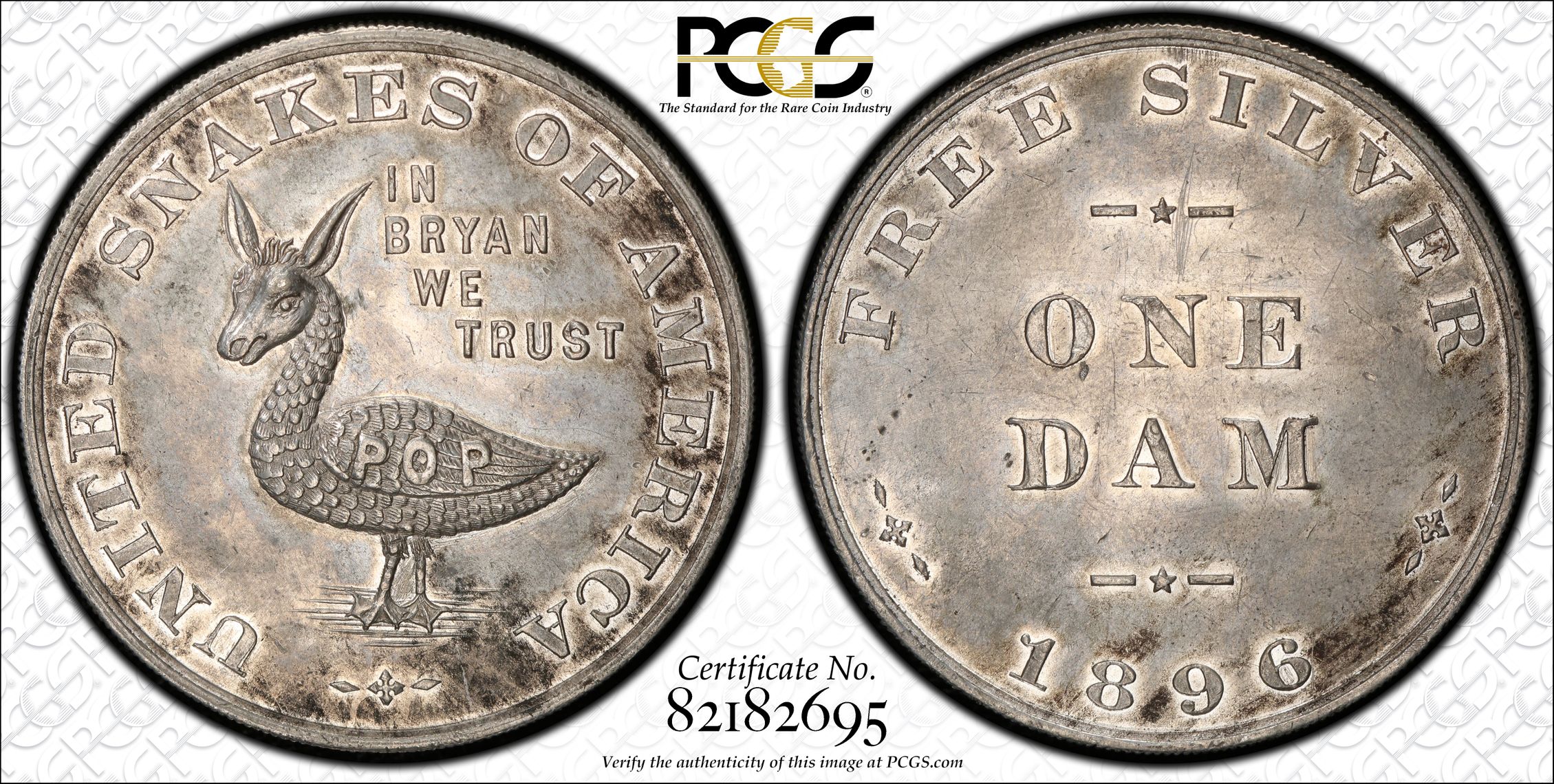
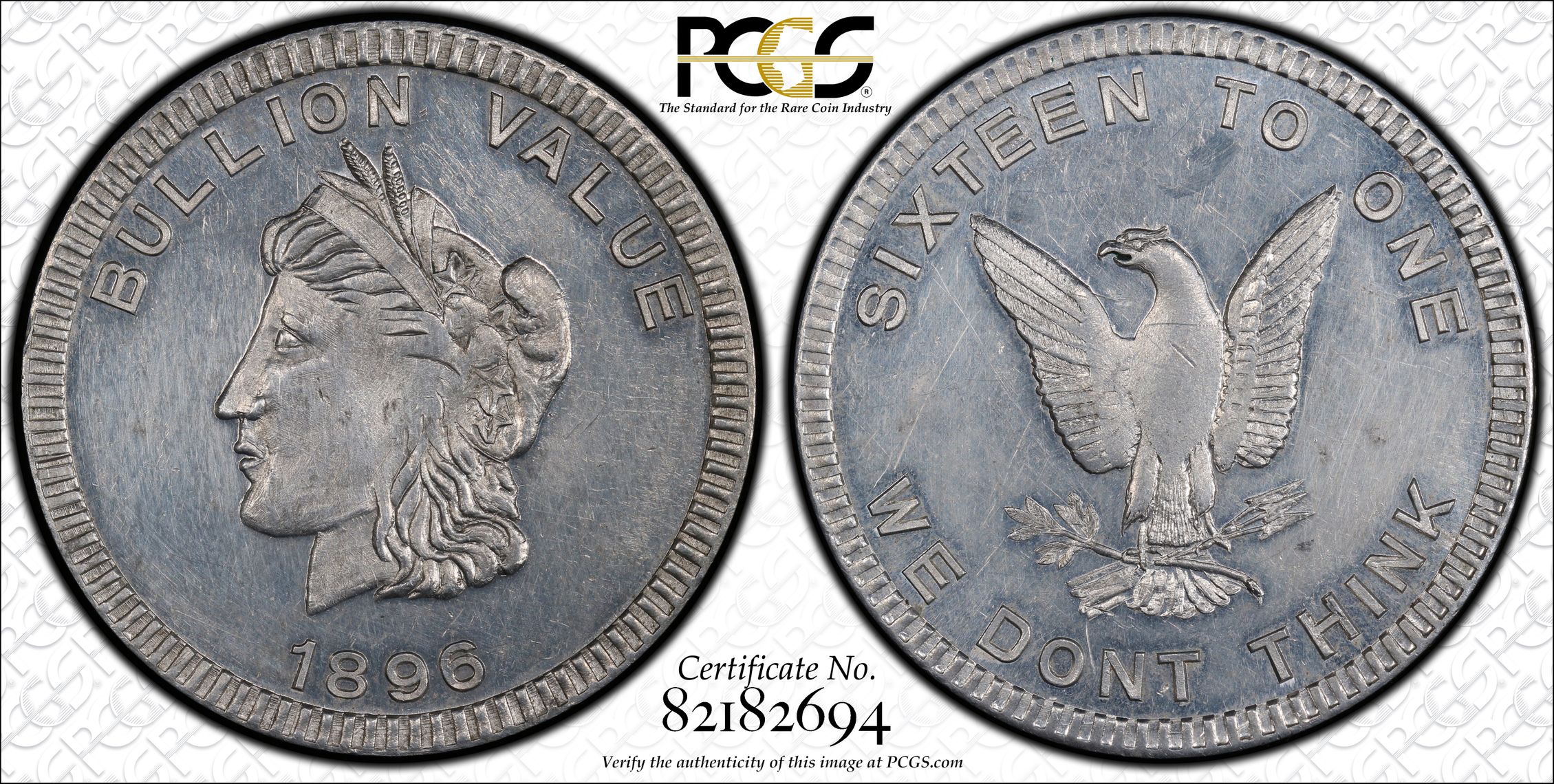
..
1896 Bryan$ Sch-845 Aluminum Sixteen To One, We Don't Think
.
CoinsAreFun Toned Silver Eagle Proof Album
.
Gallery Mint Museum, Ron Landis& Joe Rust, The beginnings of the Golden Dollar
.
More CoinsAreFun Pictorials NGC FOR SALE
About 25 years ago, I had five or six examples of the Gorham silver Dollars/ Bryan Money.
Sadly, I felt that I couldn't devote more resources to this niche interest and eventually sold what I had.
A typical Gorham (actual size is very large, the "cartwheel" shown on one side is supposed to be 38.1 mm - the size of a government silver dollar):
Those are kinda neat.
Don't feel too badly. The Gorham comparitive dollars are among the most common of all the Bryan dollars that are made of coin silver. They can easily be replaced.
@BillJones
Well, thank you, but I got a fair price and I've not lost too much sleep.
A few years later, somebody wrote a pretty good book on the subject, lots of illustrations - that might have been the only moment of any real pangs of regret.
A private collector with finite resources can't collect everything!
Political satire pieces of William Jennings Bryan's presidential campaigns
PM me Bill if you would please. Thanks!
Even though not technically considered Bryan Money, this is a cool piece I have in my Bryan collection...an encased and enameled 1900 Indian head cent


“Bryan money” is a series of mostly large tokens or medals that mostly satirized William Jennings Bryan’s free silver** position during his three failed runs for president of the United States. Most of the pieces were issued during his 1896 run; somewhat fewer were issued in 1900; and the least were issued during his last run in 1908 when free silver was not a big issue then.
“Bryan money” is divided into two broad categories. The comparative pieces were made of coin silver (90% silver, 10% copper). They were in all but one case larger than the standard silver dollar. The jest was that the silver dollar needed to be that large to really be worth a dollar. Here is an example. The slogans on the piece explain the case. This is rare variety that was made and issued by the Tiffany Jewelry Store.
The satirical pieces were usually made of lead or some other base metal. They were usually large and heavy and were making the joke that silver coin, usually a dollar, had to be THIS BIG to be worth a dollar. The workmanship was usually crude, either on purpose or because the maker couldn’t do any better. The “Lady Liberty” on the piece was usually made to look stupid or ignorant often as a reflection on the Bryan supporters. Here is fairly typical, fairly well executed example.
Here is one of these pieces next to a silver dollar.
Not all pieces were anti-Bryan. Here is pro-Bryan piece.
** Free Silver – Bryan called for the unlimited coinage of silver. All one had to do under his platform was to show up at the one of the mints with silver, and the government would turn into coins, almost always silver dollars, for no charge.
Cutting though the nonsense, Bryan and his supporters were inflationists. (People who were looking to devalue the dollar through massive increases in the money supply.) A lot of them owed money, and they were looking to pay back their debts with cheaper dollars than they had borrowed. During the time that Bryan was running for president in 1896 and 1900, there was glut of silver on the market from the western silver mines, and those who produced the metal were looking to cash in via “soft money” government policies.
No one knows if Bryan really understood the economic issues of what he was advocating. He probably didn’t in 1896. He might have later on, but that was not the point. He was a stemwinder of a public speaker with boundless energy, even if he was he was a little light in the brains department.
Wow, that's a little harsh. Let's not get personal - the guy is not even here to defend himself.

You'll have to admit, he did inspire some great exonumia. If he had been successful, silver dollars might have been known as "manhole covers" instead of the quant "cartwheels".
If you think I am harsh, you should read the chapter about Bryan in Irving Stone's book, "They Also Ran." He made some comments about Bryan's "shallow brainpan," and heeped it on from there.
Well, WJB was from Nebraska after all....
WJB was born in Illinois (Salem, I think) and was a graduate of Illinois College in Jacksonville. He went to law school at the institution that later became Northwestern University.
He only went to Nebraska a few years after college and went into politics there. A member of Congress at an early age, IIRC.
Early in my career, I knew an older lady who was a niece of Bryan's wife. She was very proud of that, and she had several relics of her 'Uncle's' presidential Campaigns. IIRC, Bryan's wife was from Perry, Illinois and her father sent her to Illinois College at a time when most women did not attend such institutions. Bryan and his wife married about the time he graduated.
Of course, Bryan served as U.S. Secretary of State - he resigned when he realized that Woodrow Wilson fully intended to take the U.S. into WWI.
FWIW, Bryan did win the 'Scopes Monkey Trial', not his opponent Clarence Darrow. But it was a Pyrrhic victory.
Pretty difficult to call WJB a looney.
According to Stone's take on it, Bryan was good congressman and well versed in the issues in the early 1890s. He started to go off the rails in 1896 with his free silver campaign. When asked about what the consequences of his free coinage, no limits policy might be, he answered that he didn’t know, but would catch up on the issue later. That summed up his approach to things for the rest of his career.
The character, “Brady,” that was depicted in “Inherit the wind” was not fair off the mark. He was moralistic, rigid and overly consumed with fundamentalist religion. The fact that he won the Scopes Trial was no surprise. He was “preaching to the choir” in that part of the world.
Bryan won the trial because Scopes violated the law and was guilty.
As BillDugan said he was from Salem, IL. My sister has lived there for 40 years as a teacher. And she lives on “Jennings” street.
I opened this thread really hoping that Bryan Money was a coin dealer with the best name ever.
You don't see one of these every day. A mechanical medal:




@SCDHunter...That is very interesting... I have not seen a mechanical medal before. Cheers, RickO
The McKinley campaign issued similar mechanical pieces for the 1896 (this one) and another one in 1900.
Rick - I believe they are cataloged in the Bryan Money book as well. This one is the more common one I believe.
I second the "Dam" on Sch-353!
Here are mine:




Dead Cat Waltz Exonumia
"Coin collecting for outcasts..."
Michael Kazin's "A Godly Hero" gives a well balanced view of Bryan. Much to admire, much that is disappointing. Karl Rove's "The Triumph of William McKinley" is a really good read about the election of 1896.
Got a few, here is S-6:
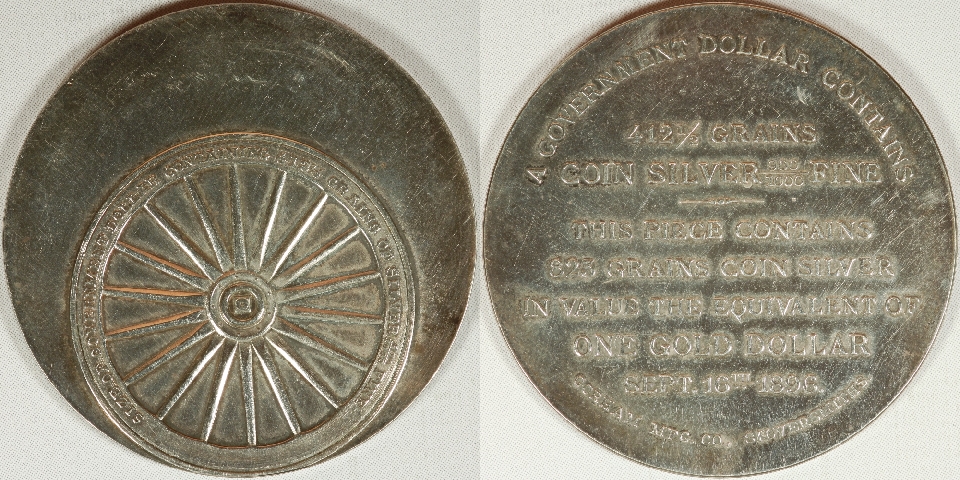
Here is S-10:
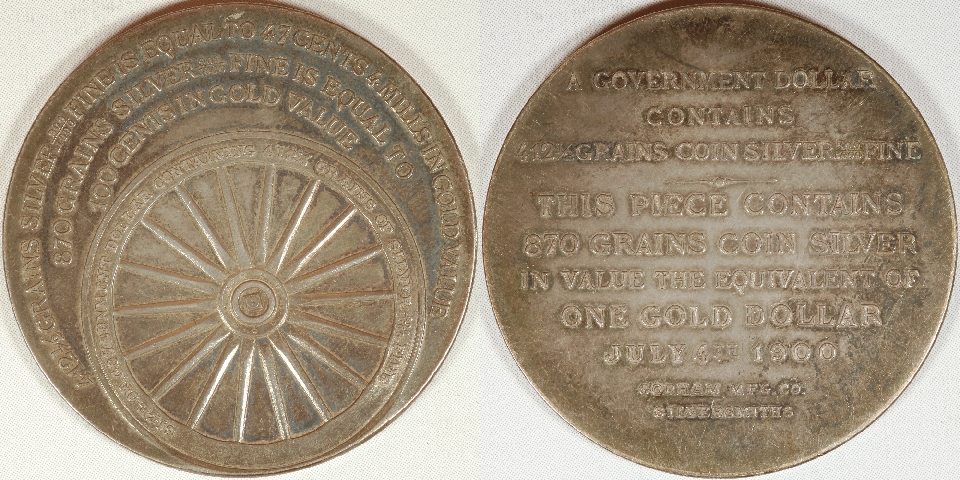
Here is S-314:
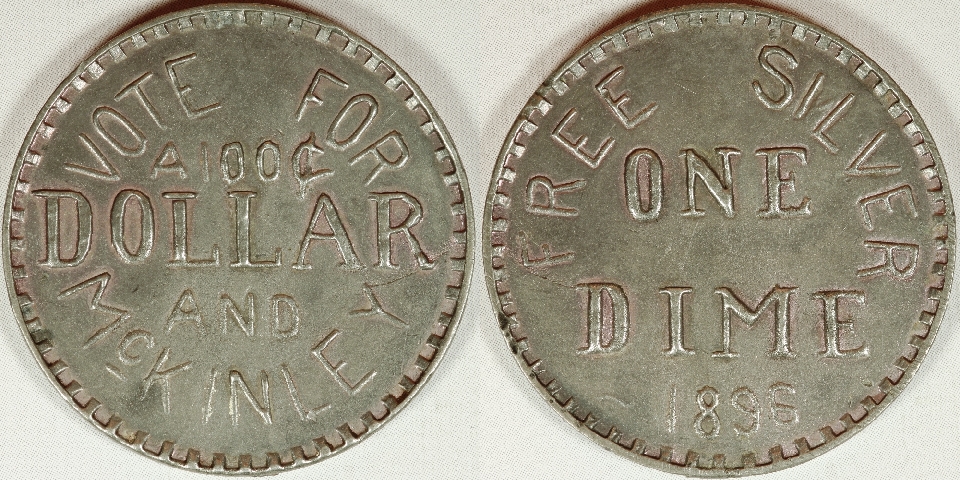
Here is S-337:
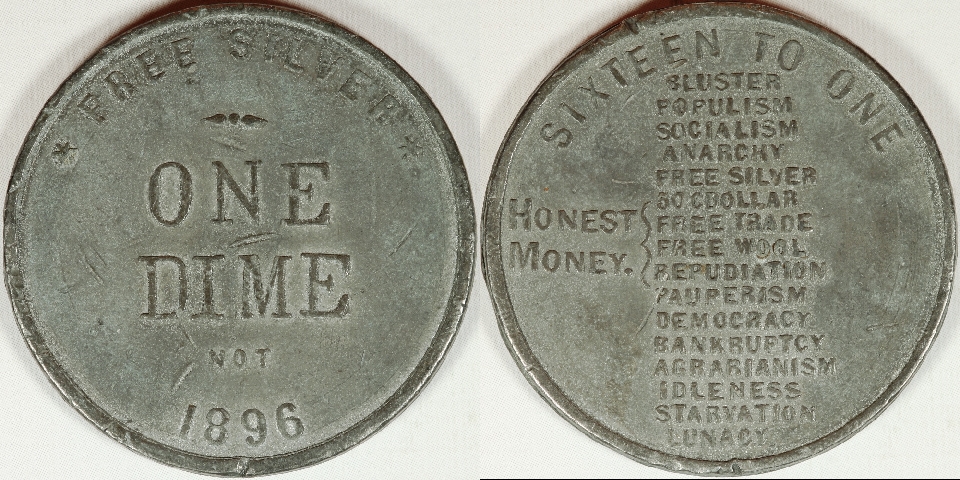
Here is S-360:
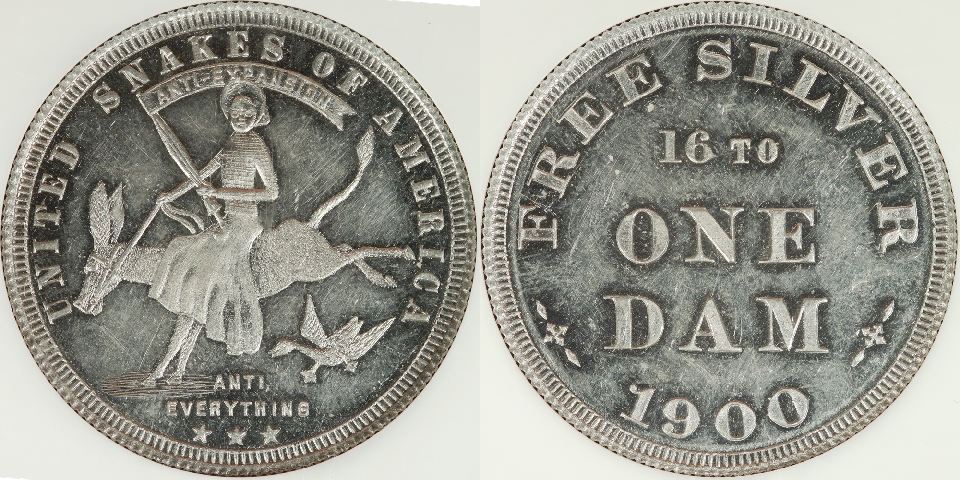
Here is HK-810:
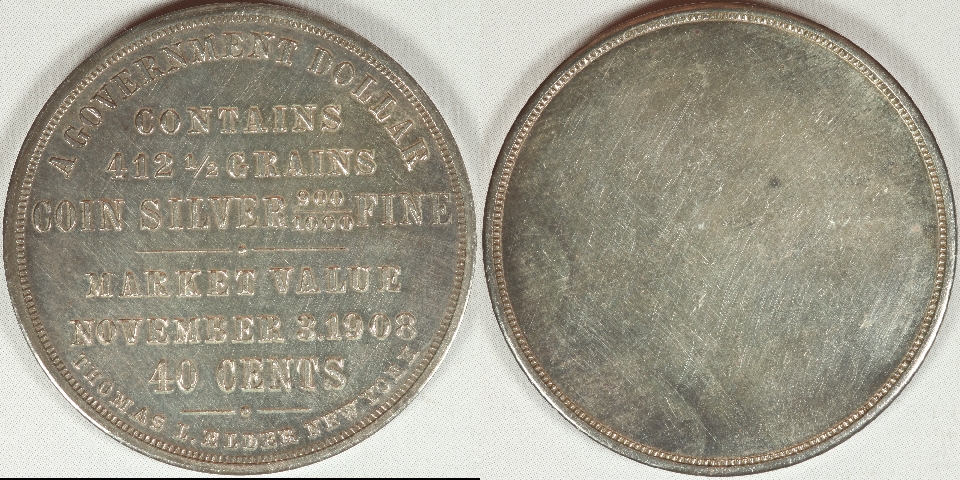
An authorized PCGS dealer, and a contributor to the Red Book.
Love the S-10, Rich!
See http://www.doubledimes.com for a free online reference for US twenty-cent pieces
Here is the 1900 version of the mechanical disk.
And here is a satirical piece against Mark Hanna who was McKinley's chief fund raiser.
A few of my Bryan pieces.
A: The year they spend more on their library than their coin collection.
A numismatist is judged more on the content of their library than the content of their cabinet.